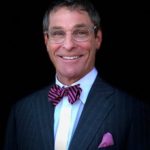
When people think of a plastic surgery procedure that takes years off of a person’s looks, one of the first surgeries that comes to mind is the facelift. While a facelift is a popular option for facial rejuvenation, it’s not the only surgical option out there.
In fact, some people might be concerned about their aging looks, but not be good candidates for a facelift. That’s where surgeries for the upper part of the face, such as an eyebrow lift, come into play. Also called a forehead lift or just a brow lift, the surgery focuses on rejuvenating the upper part of the face. It can be performed on its own, or with another facial procedure, such as a facelift, to give a person an overall refreshed and more youthful appearance.
What does the Eyebrow Lift Do?
A drooping brow or heavily lined forehead are often among the earliest signs of aging. A brow lift helps eliminate sagging and smooth the forehead. There are several methods used to perform a brow or forehead lift. The least invasive, and usually most common, method is the endoscopic brow lift.
An endoscopic procedure involves making tiny incisions in the scalp, then sliding a small camera into those incisions. The camera, or endoscope, allows the surgeon to see what he is working on, without making larger incisions.
An open brow lift is performed less frequently, and usually involves making a long incisions across the forehead, hidden in a crease or the hairline. It might benefit patients who have a significant amount of droopy and loose skin, and who have considerable amounts of fat and loose muscle in the area.
Who is a Candidate for an Eyebrow Lift?
Not everyone is a good candidate for a brow lift. The state of your health is one of the first things to consider when you’re thinking about any type of facial plastic surgery. Since brow lifts aren’t medically required, you should be in the best health possible before having one.
Your surgeon will most likely order a few blood tests and perform a physical exam before your surgery. Patients over the age of 50 might also need an echocardiogram or other heart test to make sure their heart is able to handle the stresses of surgery.
Some habits and medications might rule out a brow lift for you. For example, a surgeon won’t perform any elective surgery procedure on a patient who’s actively smoking, as tobacco use increases your risk for complications during and after the procedure. You’ll be ask to quit for at least two weeks before and after surgery.
If your health and habits are in good shape, the next thing to do is actually look at your face to see if an eyebrow lift is going to help you. A few features can help you see if you’re a good candidate for the surgery: if you have droopy brows, if you have creases or lines across your forehead or between your brows, and if you have trouble putting on eyeshadow or applying eye makeup because there’s too much droopy skin cause by your heavy brow.
What are the Risks of an Eyebrow Lift?
No surgery is completely risk-free, although following the advice of your surgeon and making sure your health is great can help cut your risks dramatically. The good news is that risks and complications tend to be rare, especially when a patient works with a board certified facial plastic surgeon.
That said, it’s important to mention any past history of reactions to anesthesia or any family history of allergies to anesthetics. Some people have trouble with some types of anesthesia, and the more your doctor knows about your history, the better.
Other potential risks associated with the surgery include infection and bleeding, asymmetry, and visible scarring. Not smoking, not taking certain medications, and choosing your surgeon with care will help reduce those risks considerably. Understanding the type of brow lift you’re having will help you best prepare for any scarring that might occur, too.
How is the Recovery After an Eyebrow Lift?
A period of recovery is required after a brow lift, there’s no getting around it. Many people need to take anywhere from a week to two weeks off from work to rest up and let their incisions heal.
Right after surgery, it’s not uncommon for there to be bruising and swelling. Keeping the head elevated at all times, even when you sleep, and using cold compresses and ice packs, will help keep swelling to a minimum.
It’s a good idea to have a team of friends and family to help you after your surgery. For example, you’ll want to have someone to bring you home afterwards, and someone to stay with you during the first day and night.
Your surgeon will give you a list of post-operative instructions, and it’s important to follow those to the letter. For example, the instructions will let you know when to return to have sutures removed and what types of pain relievers are fine to take and which ones are off limits.
Interested in learning more about the eyebrow lift? Talk to Dr. Edwin Williams, an experienced, board certified facial plastic surgeon in NY, today. Call 1-800-742-2797 to schedule a consultation at Williams Center Plastic Surgery Specialists.
